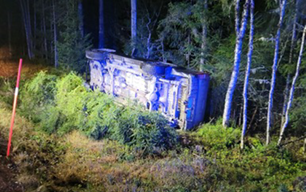The Argentine president, Alberto Fernández, will travel to Cuba for the G-77 Summit plus China, to be held on September 15 and 16, with a proposal for the Cuban authorities that solves the historical debt that the Island has with the South American country. According to the medium Online Politics, Buenos Aires will ask for tax benefits for Argentine companies that decide to settle on the Island in exchange for the amount that Havana owes.
“We want to give a solution to this, then we will see if we sell strawberries or bananas,” one of the technicians working on the proposal told the newspaper. For its part, the Cuban Embassy in Buenos Aires refused to give details to the outlet. “In Cuba, the tax pressure is low because they are undergoing a rather disorderly economic transformation process,” said a diplomat close to the situation.
The amount of the debt with Argentina is situated, according to this medium, at close to 3,000 million dollars, far from the 15,000 million indicated infobae in January of this year. Online Politics figures the exact amount at 2,816 million dollars attributed to a loan that originated in 1974, under the direction of the Peronist minister José Bel Gelbard.
At that time, the head of Economy agreed with Fidel Castro on a loan valued at 1,278.8 million for the acquisition of 1,000 tractors, agricultural machinery, 5,515 Fiat heavy trucks and 6,000 Fiat 125 cars, in addition to thousands of Renault 12, Ford Falcon, Citroën Ami 8, Peugeot 404 and 9,000 Argentine Dodge 1500 units.
In January, Infobae placed the sum at 15,000 million dollars, which it accounted for by adding the 1974 loan plus interest and penalties for non-payment
The debt was completely paralyzed during the military dictatorship that governed the destiny of the country between 1976 and 1983. It maintained excellent relations with the Cuban regime. Raúl Alfonsin was the first Argentine president to visit Cuba and also, according to the local press, the only one who managed to get a small refund of those amounts from Havana.
During Alfonsín’s term, the Island paid some 200 million dollars (102 million in 1988 and 98.6 million dollars in 1989), but the situation was again paralyzed coinciding with the fall of the Soviet Union and during the Special Period. In 1995, President Carlos Menem attempted a renegotiation of the payment through various missions for an amount that then amounted to some 1,278 million dollars, including interest.
The then Foreign Minister Guido di Tella then tried the same thing that Fernández intends to do in the coming weeks, that the regime facilitate investments in public works and tourism, but not even the conversation at the highest level, between the president and Fidel Castro, unblocked the situation.
Also under the mandate of Néstor Kirchner (and the later ones of his wife, Cristina Fernández) an attempt was made to collect the historic debt, in this case through a proposal by Foreign Minister Rafael Bielsa that would consist of a 75% haircut and payment of the remaining 25% in medical missions, drugs from the Cuban national invoice or deposit of interest in cash, but despite the number of agreements signed between the two nations during that time and the solid friendship of the governments, nothing was achieved.
In 2018 Mauricio Macri made the umpteenth collection attempt by sending his Chief of Staff, Marcos Peña, and his Secretary for Strategic Affairs, Fulvio Pompeo, to negotiate and a year later he tried again with the Secretary for International Economic Negotiations, who met, without success, with the Minister of Foreign Trade and Foreign Investment of Cuba, Rodrigo Malmierca.
Last week, Malmierca met with senior officials from the Paris Club to renegotiate the debt that it has with several member countries of that group and that currently amounts to 4,827 million dollars.
In 2017, La Política Online maintains, the debt amounted to 1,278.8 million dollars in consolidated capital and 1,272.9 million dollars in accrued interest, a total of 2,551.7 million that “arising from a conciliation and consolidation agreement of the debt as of March 31, 1995 between BICE (Banco de Inversión y Comercio Exterior) and the Banco Nacional de Cuba ratified by act of August 24, 1995”. Up to the current amount, more late-payment interest would have accrued, predictably.
In January, infobae He placed the sum at 15,000 million dollars, which he accounted for by adding the 1974 loan plus interest and penalties for non-payment.
The Argentine debt is, according to Online Politics, the largest that Cuba has with another country in an inactive state.
Last week, Malmierca met with senior officials from the Paris Club to renegotiate the debt that it has with several member countries of that group and that currently amounts to 4,827 million dollars. A new payment schedule emerged from these meetings, according to official information, after failing to meet the deadlines agreed in 2015 since 2020, when it was granted a haircut of about 8,500 million dollars.
In 2021, the regime also agreed with Russia to defer a debt related to state export credits that Moscow granted between 2006 and 2019, for a total amount of 2.3 billion dollars. At the time of signing the pact, the default deficit was 57 million, in addition to another 11 for late-payment interest, which must be returned between 2022 and 2027.
Havana also has among its largest creditors Mexico, Japan and the CRF I Limited fund, as part of the London Club. The declared external debt, as of 2020 –and which has grown by an unknown amount– amounts to almost 20,000 million dollars.
________________________
Collaborate with our work:
The team of 14 intervene He is committed to doing serious journalism that reflects the reality of deep Cuba. Thank you for accompanying us on this long road. We invite you to continue supporting us, but this time becoming a member of our newspaper. Together we can continue transforming journalism in Cuba.

